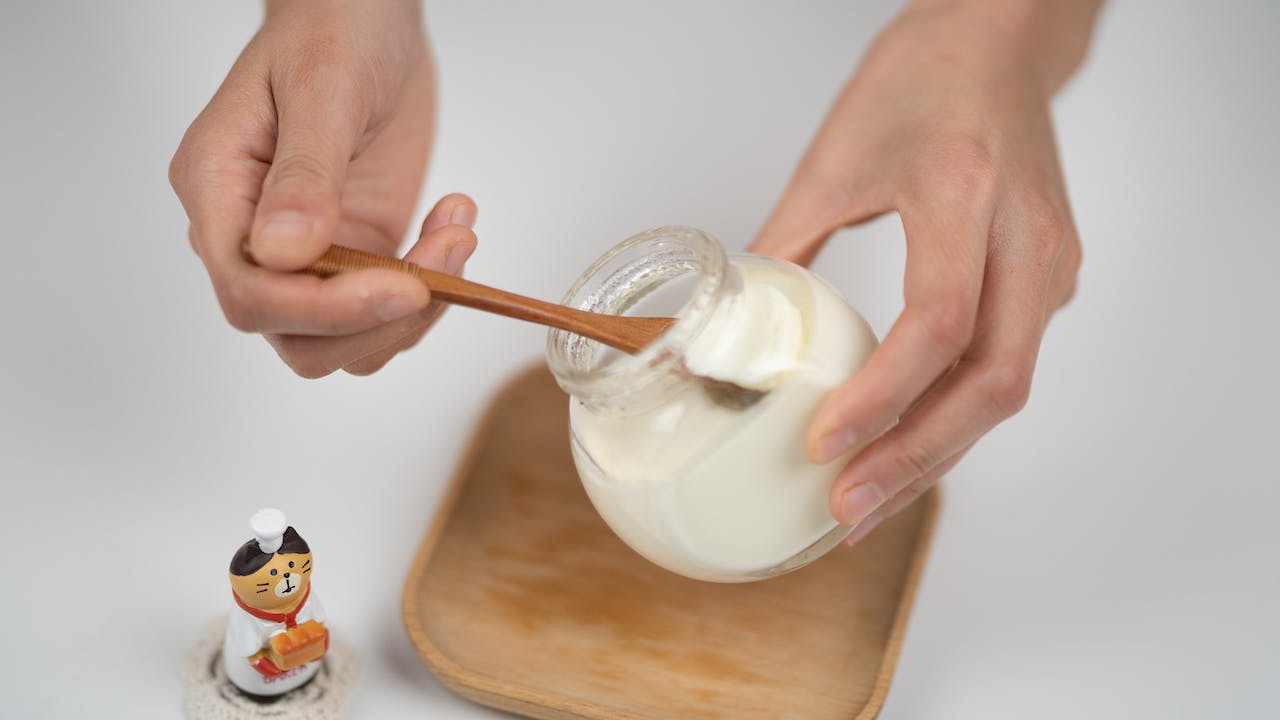
I can remember always being on a diet, yo-yo-ing from one to the next, and watching my intake of saturated fat. A friend of mine in the fitness field, around 8 years ago started having bullet coffee (black coffee with butter or cream). She said that full-fat dairy products in recommended amounts are actually better for you. I was confused and puzzled yet intrigued, so over the last 2 years I have followed the research to see if this is true.
I’m of the generation where I received full-fat milk for everything: meals, breaks at school, after-dinner snacks, and bedtime hot drinks. Back then no one cared about the effects, only the benefits, and now it has become the enemy. It has resulted in low-fat or no-fat alternatives, countless studies, and still an ongoing problem of obesity.
Research over the years has been showing that we can revert back to full-fat dairy products with caution, and enjoy that once-a-day full-fat latte. As dairy is one of our 5 main groups in the NHS eat well plate, they advise it as part of a well-balanced diet. Dairy is nutrient-dense and has 5 vitamins and 6 minerals our body needs to function. With the guidelines of 20 grams of saturated fat a day, full-fat, if used wisely, doesn’t seem so bad.
FULL-FAT
There are lots of healthy fats out there that are essential to our diet and help the body absorb nutrients, such as avocados, nuts, and olive oil.
But what about full-fat dairy products, can we include them?
Essentially no, because full-fat dairy is mainly saturated fat; however, it is high in nutrients and assists with bone and muscle growth.
Caroline Passerrollo is a registered nutritionist with the Academy of Nutrition and Dietetics, and she has said that full-fat products can help with weight management. There is evidence to suggest that it can decrease obesity risk, and reduce blood pressure by increasing fullness due to the slower digestion rate.
It does increase your bad cholesterol (LDL), but studies have suggested it can also raise your good cholesterol (HDL) and improve brain function. Therefore, leaving a big question mark over whether it does increase the risk of heart disease.
For those with diabetes or at risk, a research study in the Journal of Circulation has stated that participants who drank only full-fat milk showed a decreased risk of diabetes by 46%. Could this be due to the lack of snacking and overeating?
LOW-FAT AND NO-FAT
Ok, well we know that this is lower in calories, lower in saturated fat, and advocated for those who are at risk or have health problems. If you are going to drink or eat copious amounts of dairy products then yes, these are the options for you, due to the high saturated fat content in full-fat and the increase in bad fats within cholesterol (LDLs).
However, if you have that once-a-day dose would it be better for you to change?
Low-fat and no-fat dairy products go through a process to remove the ‘bad stuff’. But are essentially replaced with ‘other bad stuff’ such as sugar and additives. When you reduce fat content in your diet, your body will crave more, and often or not we end up feasting on more refined carbohydrates and sugar, which your body will eventually convert into fat! So, overall this could have worse effects on your insulin response and increase your risk for diabetes and obesity.
So over the years, all research has been showing numerous results giving both positive and negative effects.
My opinion?
The key is finding the balance. I see both sides of the story with all the results. I believe that if portioned appropriately and you stick to the guidelines you should be fine. But if you love dairy and want more than the recommended amount, maybe go low-fat or try a mixture of both.
However, with 230mls full-fat milk at 4.6g saturated fat and low-fat being only 3.1g I think I’ll go for full-fat milk in my once-a-day coffee and reap the benefits along the way!
Katie



